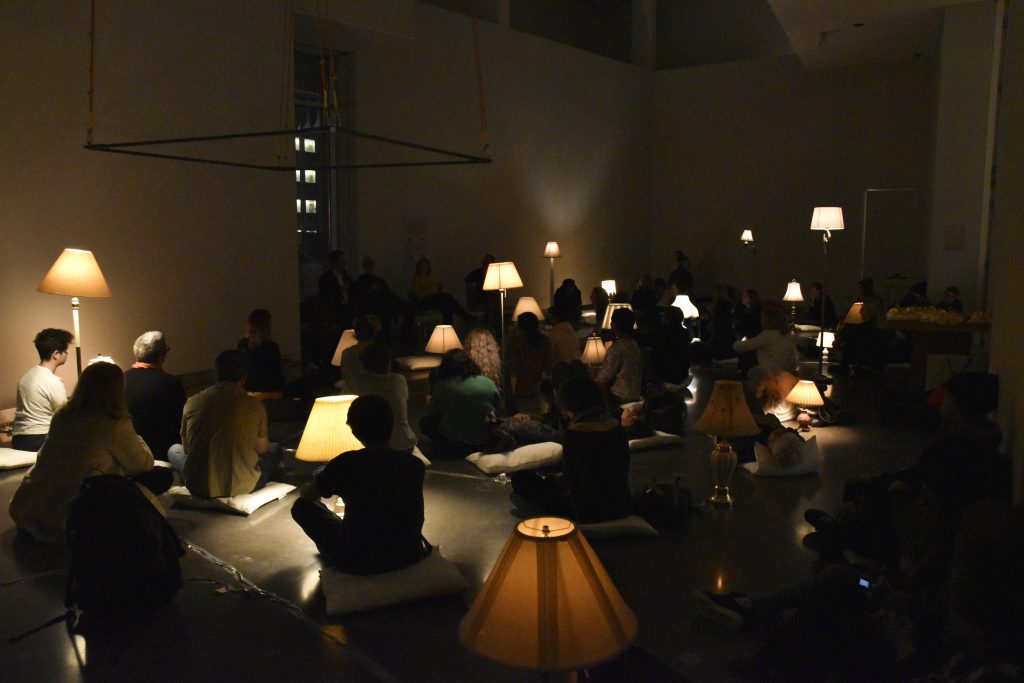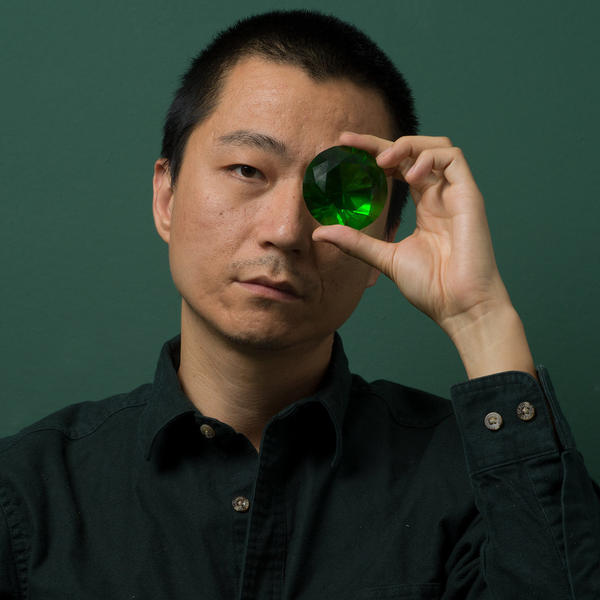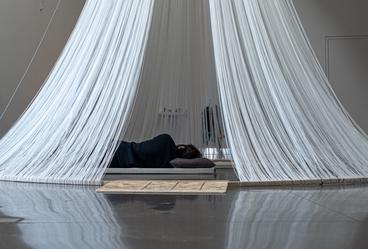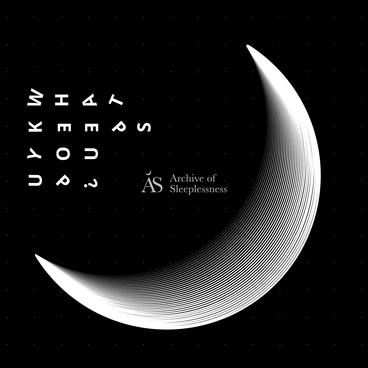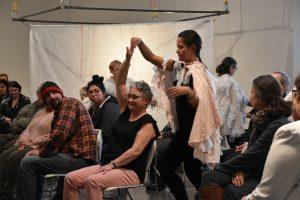Last fall, four artists and five medical researchers embarked on interdisciplinary collaborations that have led to new cultural perspectives on complex medical questions. This series of blog posts is meant to highlight their processes before the culmination of these collaborations, taking place in the Target Studio on December 5. More info about that event here >>
Artist Peng Wu doesn't sleep all too well. Finding inspiration in his sleep disorder, Wu partnered with neurologist and sleep researcher Dr. Michael Howell to design a series of studio projects and public events, using the space to discuss sleep, interview those who also suffer from sleep disorders, and educate. At one event, participants helped Wu sew pillowcases as they talked about sleep. At another, Wu filled the studio with warmly lit lamps and people sat on pillows to listen to Wu and Dr. Howell discuss how extended light exposure has damaged our circadian rhythms. The lamps slowly brightened and dimmed all the while, like deep breaths and heartbeats.
“When a doctor tells you something, you learn from language. I think a more effective way is to be in a participatory art event, to hear and experience that knowledge,” Wu said.
Wu and Dr. Howell have big plans for the upcoming year. In collaboration with graduate students from the University's Architecture program, a “live pillow” environment, filled with soil and grass seeds, will come into form. Dedicated to facilitating the discussion and open conversation surrounding sleep, people will be invited to relax, chat, and nap through this highly sensory and seemingly magical experience.
“This is a unique, once in a career opportunity so far. I hope to do something like this again. It was one of the best experiences of my career working with Peng Wu. He taught me a lot and looked at the challenges of sleep in novel ways—thinking about new ways in which to communicate with people the importance of sleep and how sleep is meaningful in our lives,” Dr. Howell said. “What I’ve learned from Peng has been more, I think, than what he’s learned from me.”
